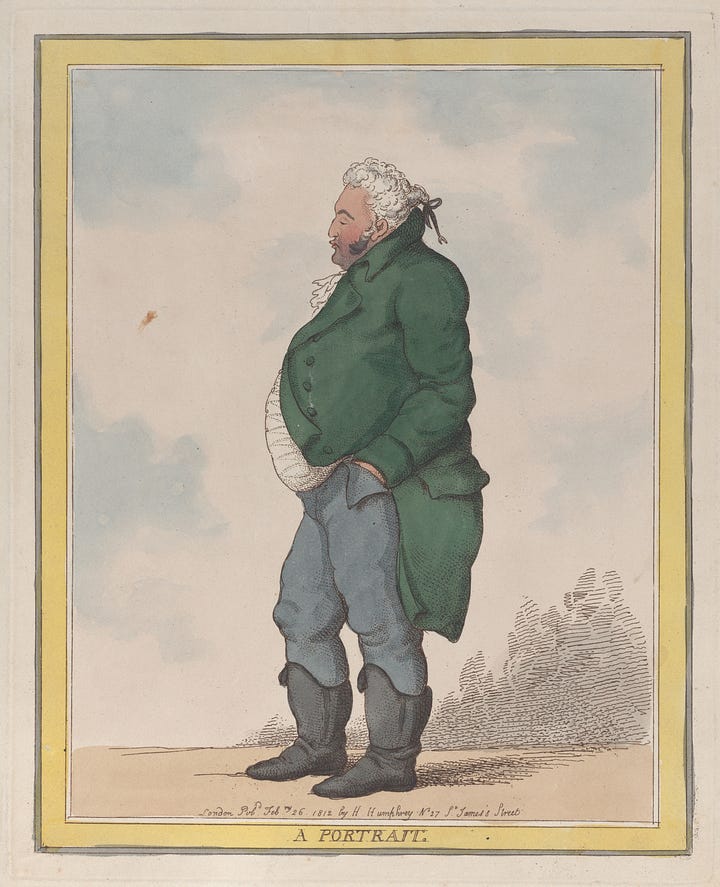

As regular readers know, I’m fascinated by the history of pocket gadgets, an interest inspired by a passage in Adam Smith’s Theory of Moral Sentiments, as well as a lifetime enthusiasm for all things tiny. I’ve explored them here (Adam Smith angle) and here (pocket globes). I’m also interested in the history of apparel. So when I learned that a fashion historian had written a book called Pockets: An Intimate History of How We Keep Things Close I was keen to review it. The review is now out and here’s the opening:
Like printed books, perspective drawing, and double-entry bookkeeping, pockets were heralds of the modern era. In most times and places, people have either carried their money, combs, papers, and other small items in bags separate from their garments or tucked them into belts or sleeves. Integrated pockets are a product of European tailoring, which dates back only to the 14th century. They emerged when men’s breeches ballooned in the mid-1500s.
Early pockets were bags sewn to the inside of the waistband and otherwise hanging loose. They were significantly larger than modern pockets—a rare surviving example from 1567 is a foot deep—and sometimes included drawstrings. Regardless of size, the critical change was that the pocket became part of the clothing and thus a more secure and intimate extension of the wearer. “Yoking bag to breeches in what looks like an improvisational ‘lash-up’ created a tool demonstrably more private and personal than the public-facing purse,” writes Hannah Carlson in her newly published Algonquin Books release, Pockets: An Intimate History of How We Keep Things Close.
To tell the story of pockets, Carlson, a dress historian at the Rhode Island School of Design, mines literature and art, including once-popular works that have lapsed into obscurity. She reads old newspapers, magazines, and advice books. She scours descriptions of runaway indentured or enslaved workers. She examines historical garments. Organized in thematic chapters across a loosely chronological arc, Pockets readably presents the results of Carlson’s impressive research, demonstrating the many ways in which material culture can illuminate social, economic, and political history.
Pockets changed the nature of clothes, allowing them to encompass hidden tools and meaningful treasures. “Once the wearer places something inside their pocket,” Carlson notes, “that thing disappears, enfolded and seemingly absorbed into uncertain depths.” If that thing is a handgun, the pocket’s combination of convenience and secrecy poses a threat. Western gun control was a response to pocket pistols.
Read the whole thing here. They did a great job with the art, which includes a final photo of my best friend and me on our first day of first grade.
London Bound
On Monday, I fly to London for some research, a private speaking event, and a public Works in Progress event Thursday evening, November 30. Sam Bowman will moderate a conversation between me and Ed Conway, author of the new book Material World (and the excellent accompanying Substack
). The venue is appropriately in Spitalfields, London’s historic center of silk production. If you would like to attend, details and free registration are here.Coming in the new year, speaking trips to the Carolinas (date TBD, so email me if you’re interested in a booking) and Indiana, including Ball State and Wabash College, (early April). If you’re interested in booking me as a speaker, either in person or online, please email me at vp@vpostrel.com.
Seasonal Notes
A new issue of Works in Progress is out and highly recommended! I didn’t write anything in it but I did commission this article on asbestos by Mano Majumdar.
My article on Thanksgiving textiles, including the Mayflower’s sails, is always timely.
And here’s a gift-giving guide to my books:
The Fabric of Civilization: For the textile lover, of course, but for anyone interested in history, technology, or why our world is the way it is. More than one reader has told me it reminds them of James Burke’s Connections series, and it should appeal to fans of Matt Ridley (who gave it a nice endorsement blurb) and Steven Johnson.
The Power of Glamour: It’s a beautiful artifact, so you can buy it for non-readers who want something for the coffee table. The images serve as a visual soundtrack to a work of intellectual theory, including two chapters limning the history of glamour in its pre-modern and modern forms. This book decodes glamour as a form of communication and visual persuasion. Better for René Girard or Martin Gurri fans than for the typical fashionista.
The Substance of Style: An oldie but a goodie. What’s the value of making things look good? Status isn’t the only reason people care about how things look and feel. The trend that inspired the book is a background phenomenon now, but the analysis still holds—all the more so as we enter an era of AI images on demand. More accessible than The Power of Glamour, this is the book for anyone interested in design, branding, or why they buy cool-looking things they don’t need. Features a famous paragraph on toilet brush holders.
The Future and Its Enemies: The classic is enjoying a resurgence of interest, some of which I discussed in this early Substack post. It puts both the rise of illiberalism and the burgeoning “progress studies” movement in a useful framework—the conflict between ideals of bottom-up dynamism and top-imposed stasis—that crosses traditional political and cultural lines. (Just substitute “Donald Trump” where it says “Pat Buchanan,” keeping in mind that Buchanan was a more serious thinker.) For your loved ones who like arguing on the internet or listening to political podcasts.



